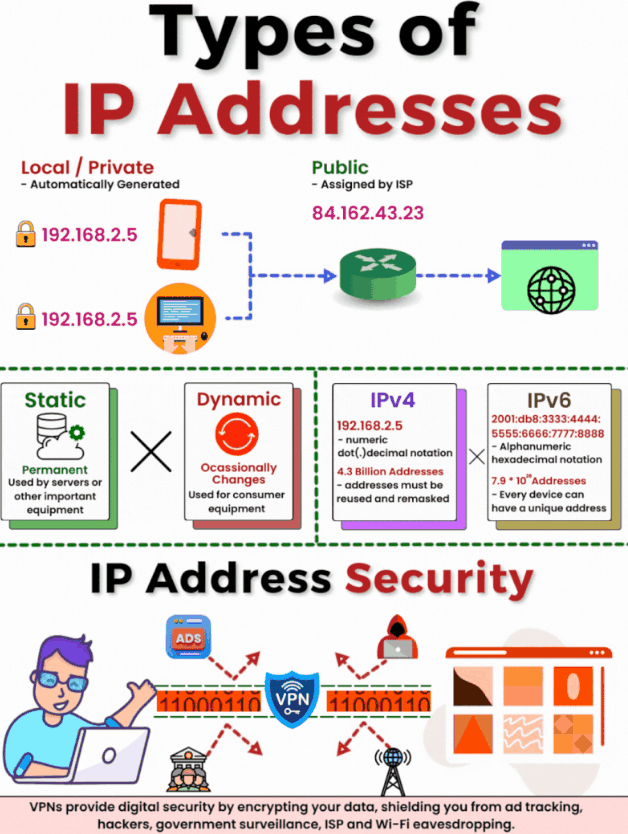Type of ip address
Pass Any Cisco Exam On Your First Try.
Want to boot your networking career ? This is the chance for you.
IP addresses, or Internet Protocol addresses, are unique numerical identifiers assigned to devices connected to a network. They are essential for facilitating communication between devices over the internet or other networks. IP addresses are divided into several types based on their usage, format, and scope. Here are the main types:
To receive all the full articles and support Real Lab Workbook, consider subscribing:
Based on IP Version
IPv4 Addresses:
Format: 32-bit numeric address, written as four decimal numbers separated by dots (e.g., 192.168.0.1).
Range: 0.0.0.0 to 255.255.255.255.
Total Addresses: Approximately 4.3 billion.
IPv6 Addresses:
Format: 128-bit alphanumeric address, written as eight groups of four hexadecimal digits separated by colons (e.g., 2001:0db8:85a3:0000:0000:8a2e:0370:7334).
Range: Vastly larger than IPv4, essentially unlimited for current and foreseeable future needs.
Total Addresses: 340 undecillion (3.4 x 10^38 addresses).
Based on Function and Scope
Public IP Addresses:
Assigned to devices connected to the internet.
Globally unique and routable on the internet.
Example: An IP address assigned by an ISP to a home router.
Private IP Addresses:
Used within private networks.
Not routable on the internet; must use Network Address Translation (NAT) to access the internet.
Common private IP ranges (defined by RFC 1918 for IPv4):
10.0.0.0 to 10.255.255.255
172.16.0.0 to 172.31.255.255
192.168.0.0 to 192.168.255.255
Example: 192.168.1.1 (often the default address for home routers).
Static IP Addresses:
Permanently assigned to a device.
Useful for servers, network printers, or other devices needing consistent addressing.
Example: An IP address permanently assigned to a web server.
Dynamic IP Addresses:
Assigned temporarily by a DHCP server.
Typically used for home devices and can change over time.
Example: An IP address assigned to a laptop when it connects to a Wi-Fi network.
Special-Purpose IP Addresses
Loopback IP Addresses:
Used for testing and inter-process communication on the local machine.
IPv4 example: 127.0.0.1
IPv6 example: ::1
Link-Local IP Addresses:
Used for communication within a single network segment.
Automatically assigned in the absence of a DHCP server.
IPv4 range: 169.254.0.0 to 169.254.255.255
IPv6 range: fe80::/10
Multicast IP Addresses:
Used to send a single packet to multiple destinations.
IPv4 range: 224.0.0.0 to 239.255.255.255
IPv6 range: ff00::/8
Broadcast IP Addresses:
Used to send a packet to all devices on a network.
IPv4 broadcast address: The last address in a subnet (e.g., 192.168.1.255 for the subnet 192.168.1.0/24).
Understanding these types of IP addresses and their roles is crucial for network management, troubleshooting, and designing network infrastructure.



